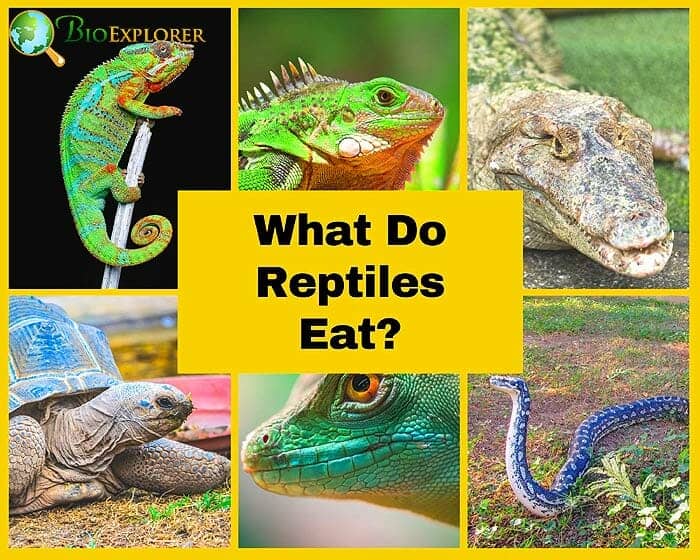
The Cornerstone of Health: Achieving Balanced Nutrition for Reptiles and Amphibians
The captivating world of reptiles and amphibians is filled with diverse species, each boasting unique dietary needs that reflect their evolutionary adaptations. As responsible keepers, providing a balanced diet is paramount to ensuring the health, longevity, and overall well-being of these fascinating creatures. This article will delve into the intricacies of reptile and amphibian nutrition, covering the essential components of a balanced diet, the importance of supplementation, and practical tips for creating meal plans tailored to specific species.
Understanding the Nutritional Landscape
Reptiles and amphibians exhibit a wide range of feeding strategies:
- Carnivores: Primarily consume insects, invertebrates, or vertebrate prey. Examples include many snakes, lizards like leopard geckos, and some amphibian species.
- Herbivores: Primarily feed on plant matter such as leaves, vegetables, and fruits. Examples include tortoises, iguanas, and some lizards.
- Omnivores: Consume a mix of both animal and plant matter. Examples include bearded dragons, box turtles, and some aquatic turtles.
- Insectivores: Specifically consume insects. Examples include Chameleons, frogs, and small lizards.
Understanding the natural diet of your reptile or amphibian in the wild is the first step in replicating it in captivity.
Essential Components of a Balanced Diet
A balanced diet for reptiles and amphibians should encompass the following key elements:
- Protein: Crucial for tissue growth, repair, and enzyme production. Animal-based protein sources include insects, worms, rodents, and fish. Plant-based protein sources include legumes, leafy greens, and some vegetables.
- Carbohydrates: Provide energy for daily activities. Sources include fruits, vegetables, and grains (in limited quantities for omnivores).
- Fats: Essential for hormone production, insulation, and absorption of fat-soluble vitamins. Sources include insects, nuts, seeds, and some fruits like avocados.
- Vitamins: Vital for various bodily functions, including immune system support, bone health, and vision.
- Minerals: Necessary for bone development, nerve function, and enzyme activity. Calcium and phosphorus are particularly important for reptiles and amphibians, especially those that are rapidly growing or reproducing.
- Water: Essential for hydration, digestion, and waste elimination. Fresh, clean water should always be available.
Meeting the Needs of Different Dietary Groups
- Carnivores:
- Insects: Crickets, mealworms, dubia roaches, black soldier fly larvae, and waxworms are common choices. Gut-loading insects with nutritious foods before feeding them to your reptile or amphibian is essential to enhance their nutritional value.
- Rodents: Frozen-thawed rodents are a staple for many snakes and larger carnivorous lizards. The size of the rodent should be appropriate for the size of the reptile.
- Fish: Some aquatic turtles and amphibians may consume fish. Ensure the fish are from a reputable source and are free of parasites.
- Herbivores:
- Leafy Greens: Collard greens, mustard greens, turnip greens, dandelion greens, and romaine lettuce are excellent choices. Avoid spinach, kale, and broccoli in large quantities due to their oxalate content, which can interfere with calcium absorption.
- Vegetables: Carrots, sweet potatoes, squash, green beans, and bell peppers are nutritious options.
- Fruits: Fruits should be offered in moderation due to their high sugar content. Berries, melon, and papaya are suitable choices.
- Omnivores:
- A balanced mix of insects, vegetables, and fruits is crucial. The proportion of each component will vary depending on the specific species.
The Importance of Supplementation
Even with a varied diet, supplementation is often necessary to ensure reptiles and amphibians receive all the nutrients they need.
- Calcium: Reptiles and amphibians require calcium for bone growth, muscle function, and nerve transmission. Calcium deficiencies can lead to metabolic bone disease (MBD), a debilitating condition. Supplementation is especially important for juveniles and gravid females.
- Vitamin D3: Vitamin D3 is essential for calcium absorption. Reptiles and amphibians synthesize vitamin D3 when exposed to UVB light. However, indoor enclosures often lack sufficient UVB, making supplementation necessary.
- Multivitamins: A multivitamin supplement can help fill in any nutritional gaps in the diet and ensure that reptiles and amphibians receive all the essential vitamins and minerals they need.
Practical Tips for Creating a Balanced Meal Plan
- Research: Thoroughly research the specific dietary needs of your reptile or amphibian species.
- Variety: Offer a wide variety of foods to ensure a balanced intake of nutrients.
- Gut-Loading: Gut-load insects with nutritious foods before feeding them to your reptile or amphibian.
- Supplementation: Use calcium, vitamin D3, and multivitamin supplements as directed by a veterinarian or experienced reptile/amphibian keeper.
- Monitor: Regularly monitor your reptile or amphibian’s weight, appetite, and overall health. Consult a veterinarian if you notice any signs of nutritional deficiencies.
- Freshness: Always provide fresh, clean food and water.
- Proper Size: Ensure that food items are appropriately sized for your reptile or amphibian to prevent choking or impaction.
- Consultation: Consult with a veterinarian or experienced reptile/amphibian keeper to develop a customized meal plan for your pet.
Common Nutritional Deficiencies and How to Address Them
- Metabolic Bone Disease (MBD): Caused by calcium and vitamin D3 deficiencies. Symptoms include lethargy, bone deformities, and tremors. Treatment involves calcium and vitamin D3 supplementation, UVB lighting, and dietary adjustments.
- Vitamin A Deficiency: Can lead to eye problems, respiratory infections, and skin issues. Treatment involves vitamin A supplementation and dietary adjustments.
- Thiamine Deficiency: Can cause neurological problems and muscle weakness. Treatment involves thiamine supplementation and dietary adjustments.
Conclusion
Providing a balanced diet is the cornerstone of reptile and amphibian health. By understanding the specific dietary needs of your pet and implementing a well-planned meal plan, you can ensure they thrive in captivity. Remember, a healthy diet not only prevents disease but also enhances their natural behaviors, breeding success, and overall quality of life.

